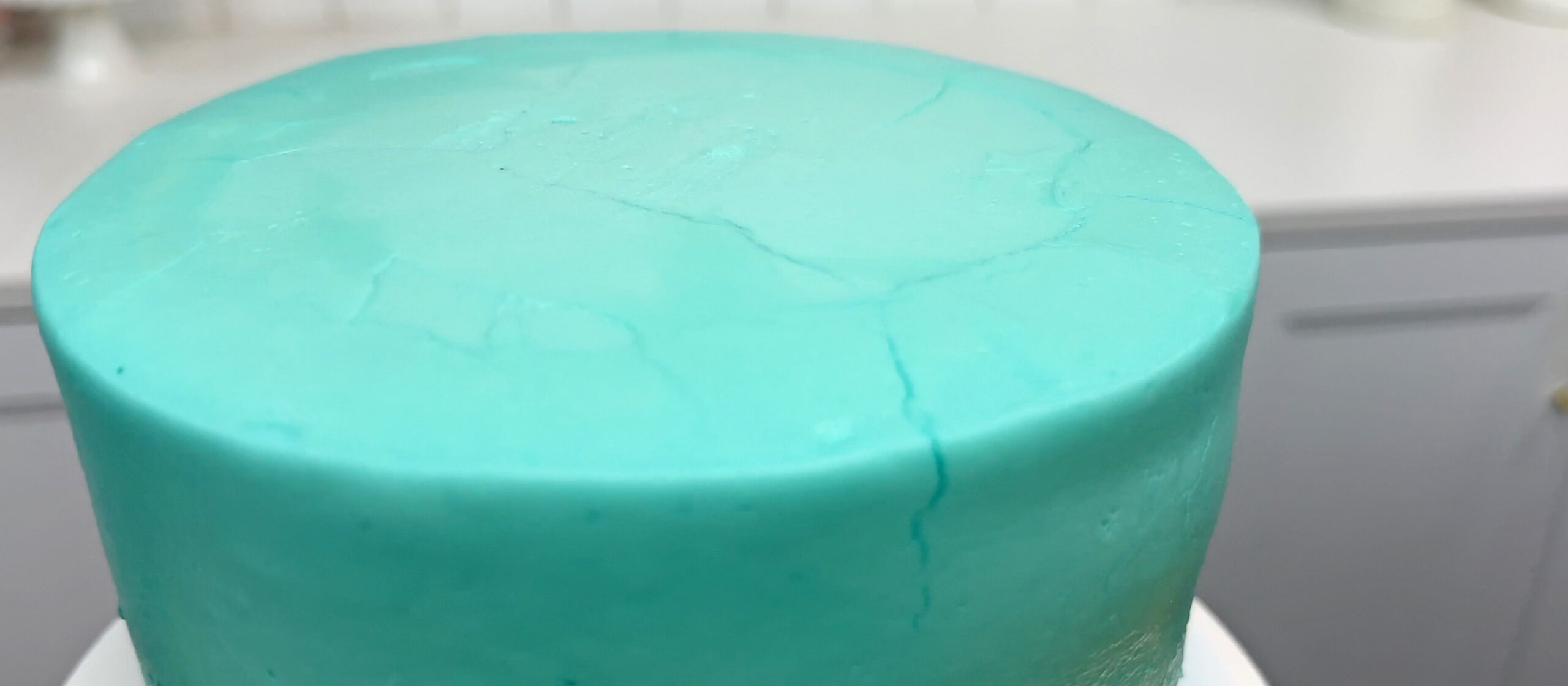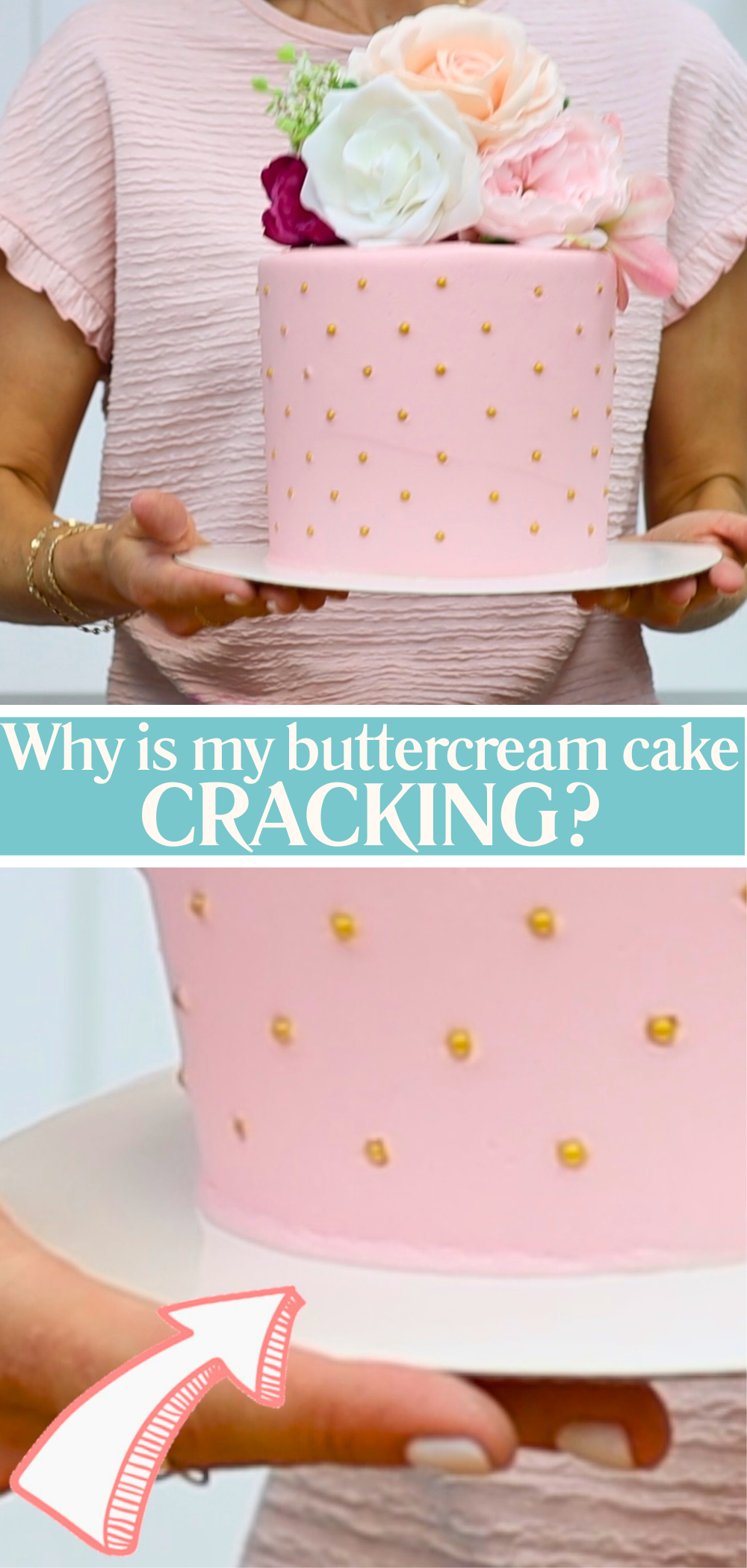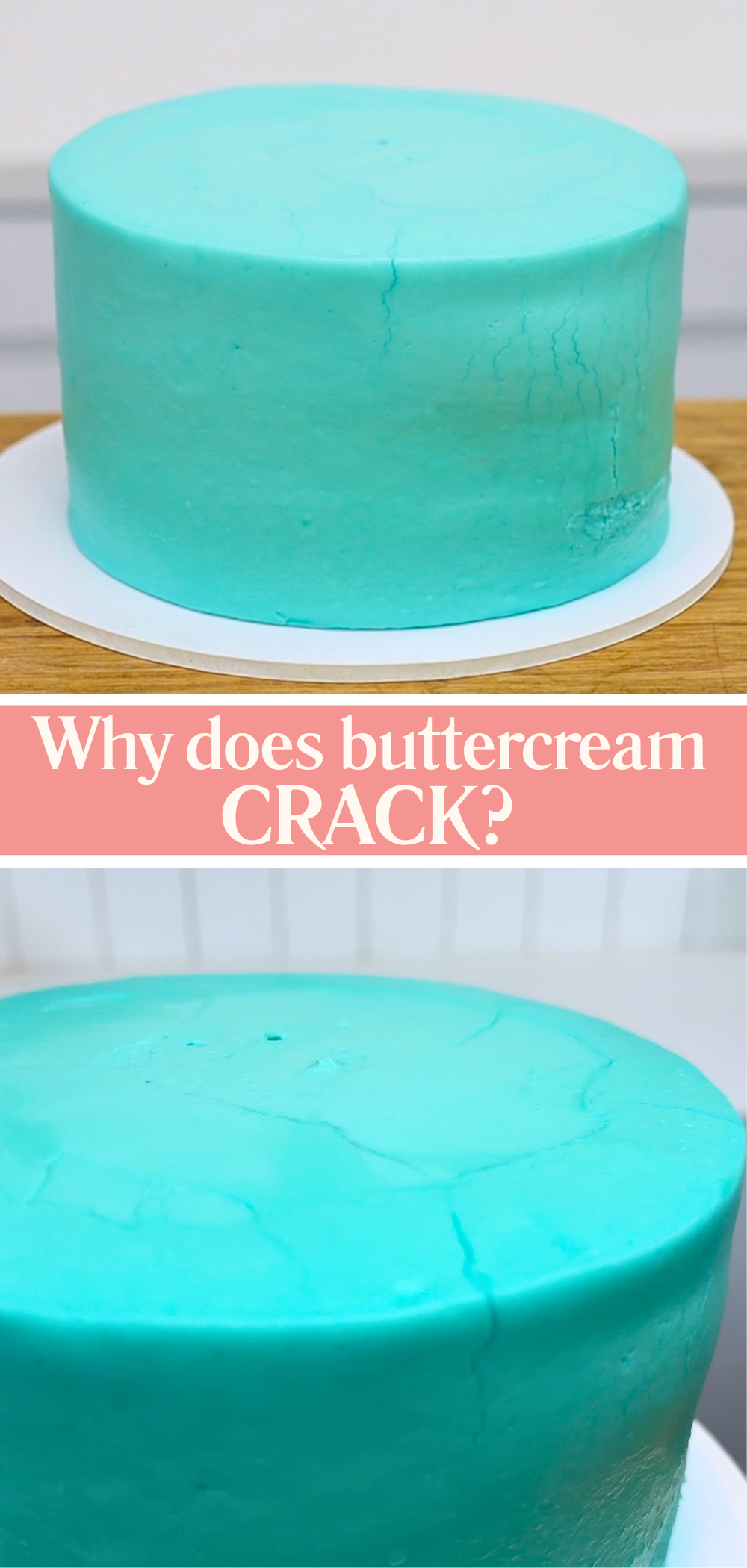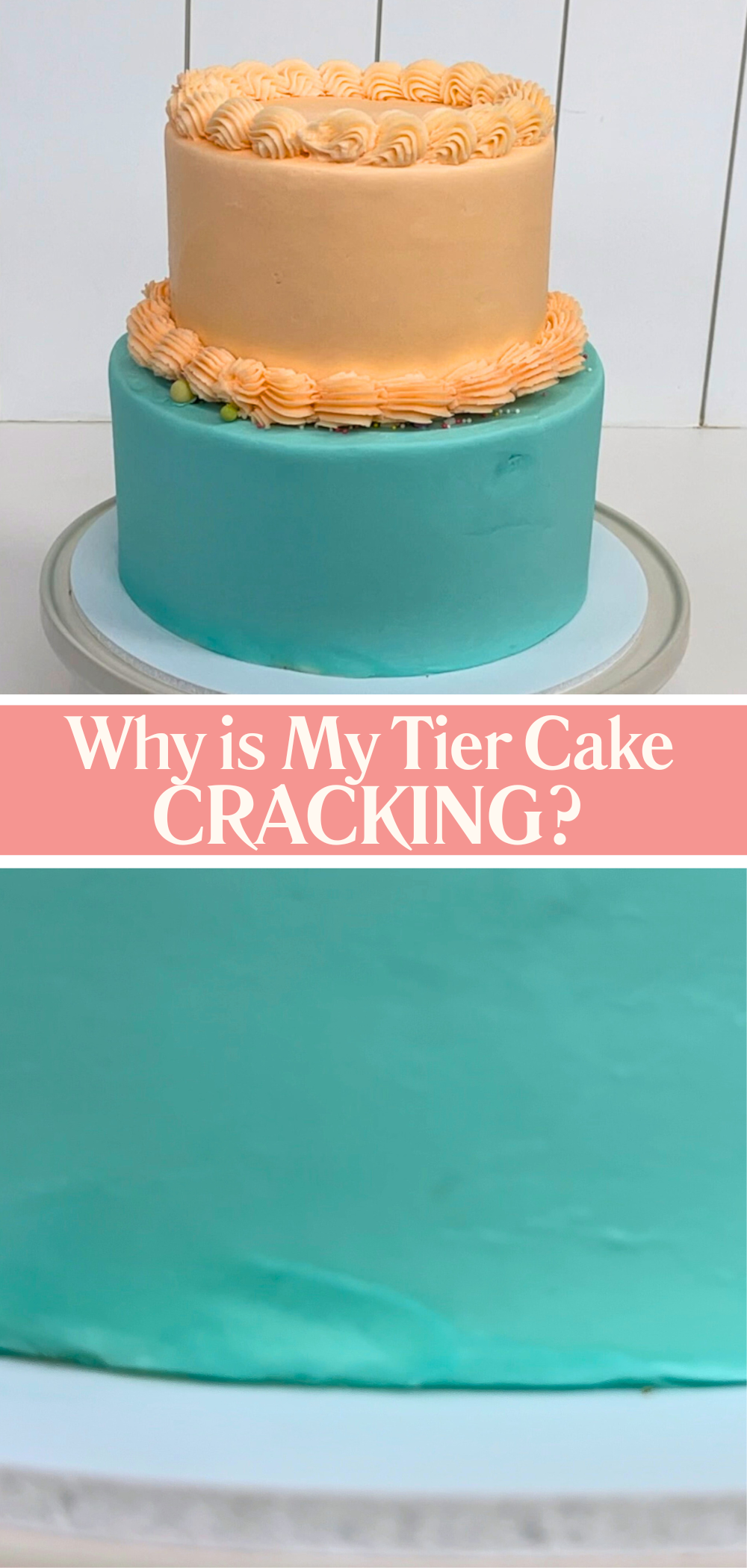
You’ve spent hours frosting and decorating your cake, only to check on it later and discover cracks in the frosting. If you’re dealing with buttercream cracking, the good news is it’s completely preventable once you understand what’s causing it.
In this tutorial I’ll walk you through three reasons buttercream cracking happens. I'll also show you exactly how to stop it from ruining your cakes.
When you first spread buttercream onto your cake it’s soft. I love my 4 Minute Buttercream and use it for all of my cakes! But after about 30 minutes in the fridge or a few hours at room temperature, the surface firms up. This is called crusting. Buttercream loses that slightly sticky texture and sets into a firm outer layer that feels dry when you touch it.
If the buttercream moves after it’s crusted, it can crack. And one of the most common causes of that movement is a bending cakeboard. Thin cakeboards can flex under the weight of the cake, especially when you're carrying it. Even a slight bend can shift the buttercream just enough to cause hairline cracks around the base of the cake.

How to prevent this: The easiest fix is to support your cakeboard properly. For a thin cakeboard, hold it with one hand underneath the middle to support the weight of the cake. Even better, use a thicker, sturdier board that doesn’t bend at all. That simple change will prevent the movement that causes buttercream cracking.
Another cause of buttercream cracking is temperature shock. Many cake decorating techniques require a cold cake, meaning it needs to sit in the fridge or freezer. When you take the cake back out, it moves from cold to warm suddenly. At room temperature the buttercream and the cake itself expand, but not at the same rate. That difference in how they warm up can lead to cracks forming hours later.

Cracks don’t affect the taste but are really frustrating when you've spent time and effort making your cake look pretty.
How to prevent buttercream cracking: Avoid moving your cake straight from the fridge or freezer into a warm room. Instead, transition it gradually. Start by moving the cake to a cool room or part of the room, away from direct sunlight. Let it sit there for a couple of hours before moving it into a warmer environment. The slower the change in temperature, the less likely you are to see cracks form in your buttercream.
The final reason for buttercream cracking happens when you stack cakes but forget to add supports.
For tier cakes, each upper tier needs two things:
Without those supports, the top cake will gradually sink into the one below it. After a few hours or during transport, the weight will cause pressure that pushes down through the buttercream, creating visible cracks in buttercream frosting.

How to prevent this: Use dowels or boba straws as internal supports. Place four or five in the bottom cake in a circle where the top tier will sit. These supports act like legs under the top cakeboard, keeping the weight from pressing directly into the frosting below. As a result, your buttercream stays smooth and crack-free. Check out my tutorial on how to make a tiered cake for more details!
Cracks in buttercream are frustratingly common but preventable once you understand what causes them: movement, temperature changes, and lack of support. Plan ahead by choosing a strong cakeboard, managing your temperature changes carefully, and always supporting stacked cakes properly.
If you’ve got questions or want to share your own cake disasters and successes, leave a comment! I’d love to hear from you!
Now that you know how to avoid buttercream cracking, your cake designs can shine! Visit my cake school to learn hundreds of cake decorating techniques and designs with my online courses and memberships!
You can also watch a video of this tutorial on why cakes crack:
